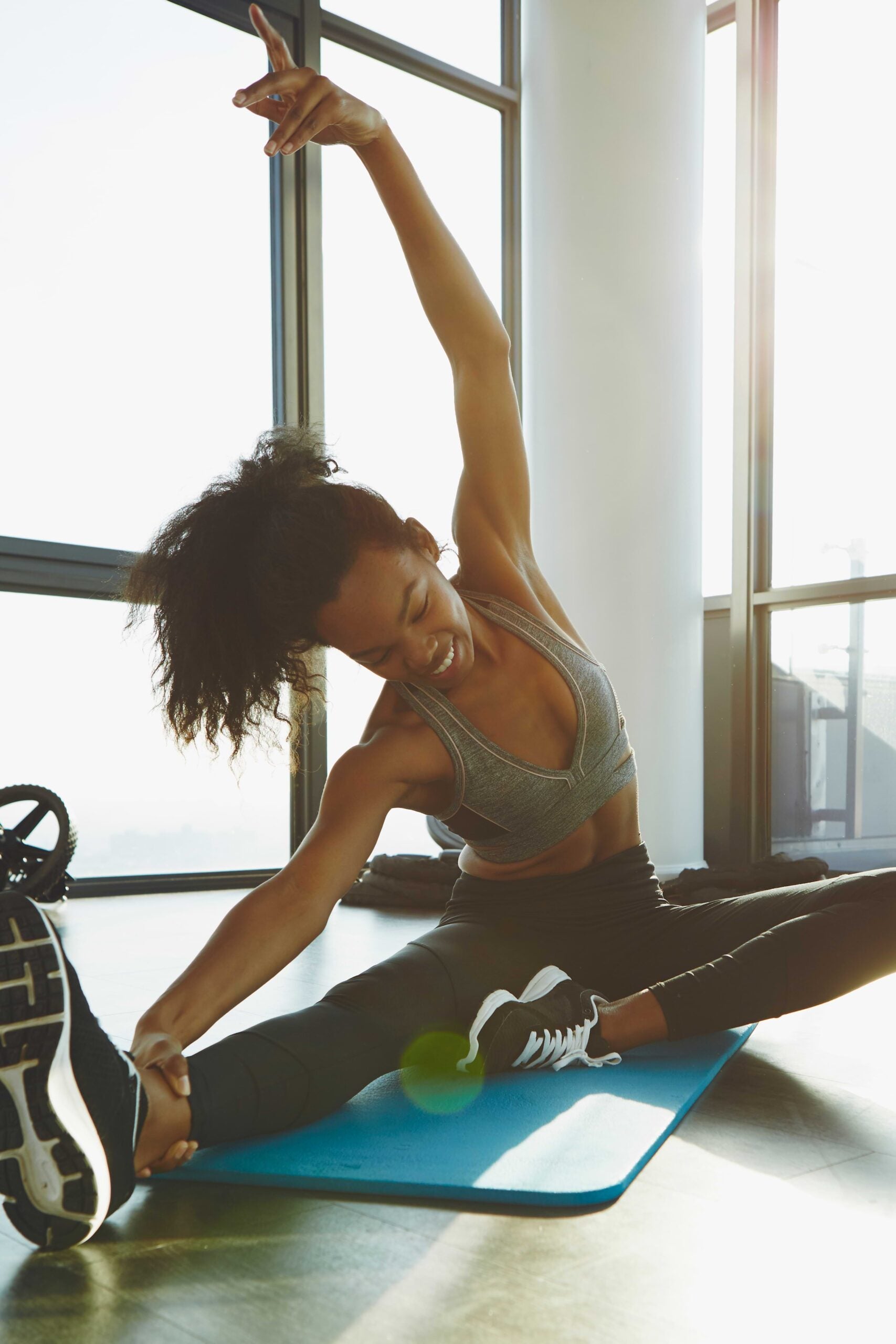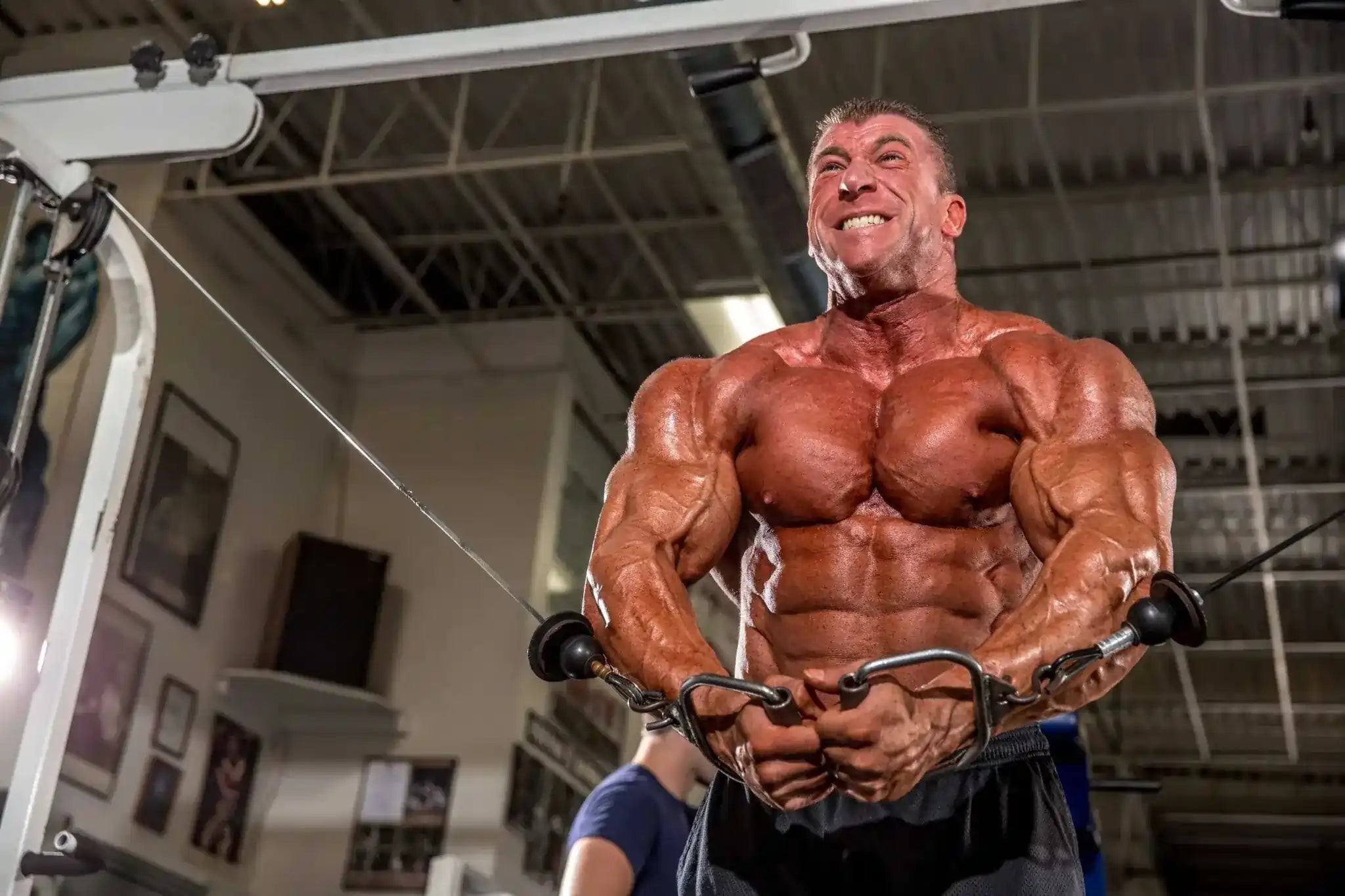During the 15 years in which I have helped hundreds of personal training clients reach their full bodybuilding potential, I have observed one immutable truth that will save you many hours of wasted effort in the gym: by designing your workouts around the best compound exercises or
multi-joint exercises, and incorporating
isolation workout exercises sparingly you may not only build a better physique faster,
BUT OVER THE LONGER TERM, YOU MAY ALSO HAVE MORE ENERGY TO DEVOTE TO BASIC TRIED AND TESTED TRAINING
protocols that really work – namely basic, hard training, which allows for ample recovery time. By selecting, on average, two
compound movement exercises and one isolation exercise for each major muscle group per workout, and going all out in the execution of each, session times can be reduced from in excess of one and a half hours to less than 45 minutes. Truly an old school approach, by prioritizing the basics in straight sets, linear periodization style at the exclusion of over-complicating one’s training through the liberal incorporation of intensity methods and isolation exercises,
real gains can be made, fast.
Compound Movements Workout

What are compound exercises?
A compound movement can be defined as: Any exercise that engages two or more different joints to fully stimulate entire muscle groups and, indeed, multiple muscles. A major benefit of using compound, or multi-joint, lifts is the systemic stress they exert throughout the target muscles and neighboring areas (in the case of squats and deadlifts, the whole body is forced to work systemically, thus producing a system-wide, or total-body, effect). Also, when systemic stress is low, our muscles fail to benefit from a hormonal cascade (GH and testosterone) conducive to enhanced protein synthesis and greater muscular growth. Yet another reason for emphasizing compound exercises over isolation (single-joint) exercises is the former’s ability to work more muscle overall, thereby eliminating the need to include excessive isolation work. This saves time and maximizes efficiency in the gym. More major muscle groups can be hit with a smaller number of exercises. While many gym-goers tend to prioritize isolation work over mass building functional movements. What is a good list of compound exercises for bodybuilding? For example, front raises, bent laterals and side laterals may take precedence over overhead presses and incline presses), the smart ones favor compound lifts to save time, stimulate more muscle fibers and enhance recovery.
So You Want to Be Strong?

It is no secret that powerlifters, weightlifters, and CrossFit devotees are some of the strongest people on earth. These athletes all include basic, compound movements as a key to their success. We can’t expect to gain any real size without substantially loading our target muscles. Given the biomechanical advantages they confer – for example, with multi-joint exercises more leverage can be generated and, given more muscles are recruited and activated, greater stability provides the structural support needed to produce greater muscular force.
COMPOUND LIFTING ALLOW MORE WEIGHT TO BE SHIFTED, MEANING MAXIMAL STIMULUS OF THE MUSCLES UNDER TENSION CAN OCCUR.
Compound movements, with their emphasis on pushing, pulling, squatting, pressing and lifting, more closely resemble how our muscles function in real life. As such, they more effectively help us to produce practical, useful strength, which we can then be used to complete our daily tasks with greater efficiency, and compete in sports which require a solid strength foundation and an ability to coordinate multiple muscle groups simultaneously.
AND BECAUSE THE BIG LIFTS REQUIRE AN ABUNDANCE OF ENERGY TO COMPLETE, AND LEAVE US FEELING EXHAUSTED
and depleted, our heart is forced to work harder than when executing isolation movements, and our metabolic rate is significantly elevated. Thus our cardiorespiratory systems and fat burning machinery are beneficially altered to promote overall health gains and a lean, muscular physique. While isolation movements certainly have their place in any good weight training regime (they allow us to target individual muscles, to accentuate specific areas of our physique), bodybuilding compound exercises are clearly king. In the following article, I will overview the five best compound bodybuilding exercises needed to cloak your physique in thick layers of muscle and provide a training plan, complete with workout protocols, to save you time while kick-starting the growth process (additional, effective, multi-joint basics will also be included).

5 Compound Exercises for Bodybuilding You Should Add to Your Workout
Bodybuilding Compound Movement #5: Dips
Done for chest or triceps, the humble dip is one of the oldest and most effective of the compound movements. Responsible for building more chest, shoulders and triceps meat than probably any other compound lift, the dip is an overlooked weapon in the fight for densely muscled upper-body mass. As a bonus, the dip forces us to work hard against more resistance (both bodyweight and weight which is added). Note: in this article’s attendant training program both triceps and chest dips will be employed. For the former: keep upper body upright, elbows tucked close to the body and flex the triceps at the top of the movements. For the latter: lean upper body forward, flare elbows out from the sides and squeeze the pecs at the top of the movement.
Bodybuilding Compound Movement #4: Reverse Grip Bent-Over Barbell Rows
Like all effective compound movements, the reverse grip barbell row (a favorite of six-time Olympia champ Dorian Yates; and no one had a more thickly muscled back than this no-nonsense Englishman) creates tension through the entire body (the coveted systemic effect) to create a complete, massive look. Because it is difficult to perform, this movement, like most multi-joint lifts, is often passed over in favor of the easier seated rows and lat pulldowns. However, for a thick, massive back – from traps to lower lats – and full biceps development, it cannot be ignored.
Bodybuilding Compound Movement #3: Bench Press
Often referred to as the king of the upper body movements, or the upper body squat, the bench press builds muscle in the chest, shoulders, triceps and back, promoting more upper body mass gains than probably any other exercise. The key to fully benefiting from this pure power movement is to emphasize the negative, or lowering, phase; completely stretch as many muscle fibers as you can on the descent, in a slow, controlled manner. While all movements should be controlled from top to bottom, many have a tendency to ‘drop’ the bar when benching. Though such form may help us to push out more reps, in doing so we effectively negate half of the rep and seriously compromise our mass building gains.
Bodybuilding Compound Movement #2: Deadlift
The many benefits to be realized through prioritizing the deadlift in our back/traps
workout routine makes this movement a mandatory lift for anyone wanting complete thickness through their entire physique, not just their lower body. Worthy of a lengthy article of its own, the deadlift works the lats, spinal erectors, traps, inner back, hamstrings, quads, calves, chest, arms – virtually all muscle groups. Suffice to say this lift, because of the demands it places on multiple muscles, is an extremely valuable way to develop functional
muscle strength along with a densely muscled physique.
Bodybuilding Compound Movement #1: Barbell (Back) Squat
Though the deadlift could easily switch places with the barbell back squat in the battle for top compound exercises supremacy, the squat (done conventional style) is a personal favorite of mine for several reasons. It maximally works our strongest muscle groupings (the quads and glutes) to establish a strong foundation of support to facilitate the development of the entire physique. Through its unsurpassed ability to target core development, the
squat enables us to become stronger on all upper body movements which require core stabilization. The squat is also arguably the most systemic of all compound lifts: the force needed to squat heavy weights places tremendous pressure on our lower back spinal erector muscles, upper back, waist, even the arms, chest and shoulders. Also, the metabolic and cardiorespiratory benefits resulting from heavy squats cannot be replicated with any other movement. Whatever your training goal, the squat, if performed correctly, will be a major component in your success.
Note: The military press is a great way to build muscle mass, help multiple joints for the heavier weights and increase body strength when used for strength training.






